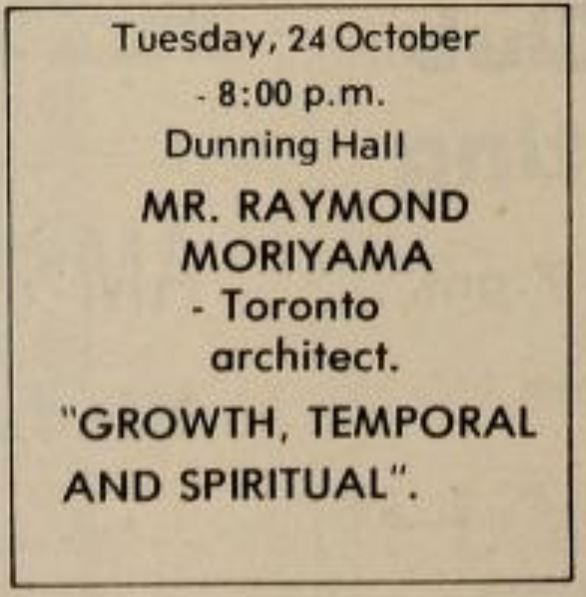
Raymond Moriyama is a well-known Canadian architect. He was born in Vancouver in 1929 and a graduate of the University of Toronto and McGill. Moriyama’s childhood experience as a Japanese Canadian internee during the Second World War was tied to his origins as an architect. In the Slocan Internment Camp, he built a treehouse that became his escape from the trauma of being declared an “enemy alien,” uprooted, and interned by the Canadian government. This treehouse, he says, inspired two of his major projects: the Canadian embassy in Tokyo and the Canadian War Museum. Moriyama has won numerous awards for his designs. He also participated in the design of the Ontario Science Centre, the Bata Shoe Museum, and the Toronto Reference Library. In 1969. he was appointed chairman of the government task force on Mid-Canada Development. He has received some of the highest professional honours including the Confederation of Canada Medal, the RAIC Gold Medal, honourary degrees from ten Canadian universities, and the Order of Canada. In 2007, he was honoured with a postage stamp by Canada Post for his design of the Ontario Science Centre. He retired in 2003.
Moriyama’s was the second lecture in the series “Social Problems in Environmental Recovery.” In his talk, Moriyama traced his conversion from developer to conservationist in a discussion on how to develop mid-Canada (the area between populated region of southern Canada and the Arctic). He claimed that the dominant interest in Mid-Canada development came from foreign inventors and southern Canadians, who valued access to new markets over minimizing their environmental impact. Drawing on this, he argued that we required a fundamental shift in our value structure away from the principle of scientific objectivity towards a new way of subjectively looking at the world. He called for a recognition that many social problems required a changing of basic attitudes, rather than increasingly complicated technological solutions, including challenging notions of “productivity,” “benefits,” and “progress.” He outlined three guiding principles for future growth: complementarity, hierarchically integrated needs, and caring. The goal was not to abandon the idea of economic growth entirely, but redirect it to areas of human growth potential and low environmental impact. For example, information should be seen as a national resource, and nurtured. During his presentation, he also showed the film “The Great American Goose Egg Company, Ltd.,” which was originally shown to the Mid-Canada Development Conference and presented a satire of modern industrialization and development.
Moriyama’s lecture was held on October 24, 1972.